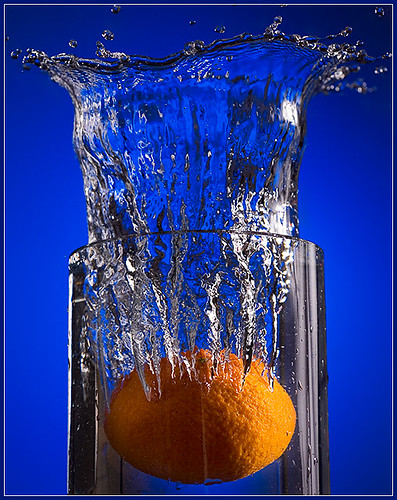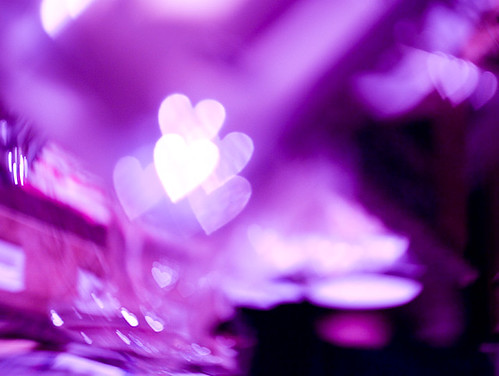Wednesday, February 28, 2007
Monday, February 26, 2007
Daughtry
 Spent Friday night at Stubbs, shooting Daughtry. He's apparently some ex-American Idol contestant that formed his own band and seems to be quite successful. I'd initially signed up to shoot them at the indoor venue at Stubbs, but they sold out and moved to the outdoor stage, then sold that out too.
Spent Friday night at Stubbs, shooting Daughtry. He's apparently some ex-American Idol contestant that formed his own band and seems to be quite successful. I'd initially signed up to shoot them at the indoor venue at Stubbs, but they sold out and moved to the outdoor stage, then sold that out too.
 I'd then get to shoot for the first 3 songs then get thrown out until the next band came on. It is such an intense way to shoot - what a rush. You are crouched down there, with thousands of people behind you, the music is deafening, even with earplugs on then the band comes on stage and the crowd is even louder than the music. The adrenaline kicks in and you start to shoot. They launch into the set and you are shooting like mad, trying to focus in the low light, trying to expose correctly in the wildly changing light, trying to track and compose on the constantly moving performers. Shoot, compose, move, check exposure, shoot, focus, shoot some more. All the time trying to keep low, not get in view, keep out of the way, not trip over a cable.
I've shot a few venues other than Stubbs and usually it is a real struggle to get enough light to even get anything sharp. This time around the light show was excellent, really bright and I was able to shoot around ISO800 and still get 1/125s exposures. Focusing and metering are still a fun challenge but at least there was a chance this time!
Then it's all over the bouncers are telling you to get out and you calm down, review some of the shots and get ready to do it all again. Great fun.
I'd then get to shoot for the first 3 songs then get thrown out until the next band came on. It is such an intense way to shoot - what a rush. You are crouched down there, with thousands of people behind you, the music is deafening, even with earplugs on then the band comes on stage and the crowd is even louder than the music. The adrenaline kicks in and you start to shoot. They launch into the set and you are shooting like mad, trying to focus in the low light, trying to expose correctly in the wildly changing light, trying to track and compose on the constantly moving performers. Shoot, compose, move, check exposure, shoot, focus, shoot some more. All the time trying to keep low, not get in view, keep out of the way, not trip over a cable.
I've shot a few venues other than Stubbs and usually it is a real struggle to get enough light to even get anything sharp. This time around the light show was excellent, really bright and I was able to shoot around ISO800 and still get 1/125s exposures. Focusing and metering are still a fun challenge but at least there was a chance this time!
Then it's all over the bouncers are telling you to get out and you calm down, review some of the shots and get ready to do it all again. Great fun.Friday, February 23, 2007
Video out
Monday, February 19, 2007
Making a splash
 A slight departure from the portraiture I've been doing recently, but still a chance to experiment with some off-camera lighting. These kinds of stop motion splash photographs always looked like a lot of fun and a recent dpchallenge theme of fruit & veg seemed like a good opportunity to make a mess.
A slight departure from the portraiture I've been doing recently, but still a chance to experiment with some off-camera lighting. These kinds of stop motion splash photographs always looked like a lot of fun and a recent dpchallenge theme of fruit & veg seemed like a good opportunity to make a mess.
 Because the main light was in an umbrella, pointing back towards the camera, flare was a concern. I put a gobo ( short for go between) between the camera and the flash to control this (black card attached to the tripod with a plamp).
I added a reflector low and camera left to bounce some fill (you can see the effect on the lesser highlight on the left of the orange). That's pretty much it for the lighting. I shot a few frames to check the exposure on the histogram. The biggest challenge was to stop the main light washing out the background - this was fixed with some tweaking of the umbrella placement. The flashes were triggered with pocket wizards, camera on tripod, triggered with a remote cable, so I could drop the fruit and trigger the camera at the same time. I took about 10 shots, went and reviewed them on the computer then shot another 10 to get the final result.
It was interesting to note the effect on the water by dropping the orange into different shaped vessels - this one is so straight up and down and the water ends up that way too. I tried some shots with a more open vase (like a martini glass shape). The water splash went much wider and not as high. I also tried a more closed, tulip shape glass, which gave a different splash shape again. Also the water level has a effect too - if the vase is really full or not. More water made a more dramatic splash obviously, but it also affects the direction and shape of the frozen splash. I had a large plate under the vase to catch/ recycle some of the water, which I poured back into a jug and into the vase for each take.
The garage dried out a couple of days later.
Post processing was pretty minimal. Some adjustment on the colours of the orange to make it more vibrant and I cleaned up some spots of water that weren't adding much to the composition, because they were out of focus or just in places I didn't like. I also overlaid a second version of the shot, adjusted to keep the highlights in check and dropped that in on top, with a mask made by selecting just the highlights (Ctrl+Alt+~). That mask got blurred a bit and then I dropped the opacity down, all just to give some slight texture to the potentially blown out highlights in the water. They are still blown out, but now with a bit more control.
Because the main light was in an umbrella, pointing back towards the camera, flare was a concern. I put a gobo ( short for go between) between the camera and the flash to control this (black card attached to the tripod with a plamp).
I added a reflector low and camera left to bounce some fill (you can see the effect on the lesser highlight on the left of the orange). That's pretty much it for the lighting. I shot a few frames to check the exposure on the histogram. The biggest challenge was to stop the main light washing out the background - this was fixed with some tweaking of the umbrella placement. The flashes were triggered with pocket wizards, camera on tripod, triggered with a remote cable, so I could drop the fruit and trigger the camera at the same time. I took about 10 shots, went and reviewed them on the computer then shot another 10 to get the final result.
It was interesting to note the effect on the water by dropping the orange into different shaped vessels - this one is so straight up and down and the water ends up that way too. I tried some shots with a more open vase (like a martini glass shape). The water splash went much wider and not as high. I also tried a more closed, tulip shape glass, which gave a different splash shape again. Also the water level has a effect too - if the vase is really full or not. More water made a more dramatic splash obviously, but it also affects the direction and shape of the frozen splash. I had a large plate under the vase to catch/ recycle some of the water, which I poured back into a jug and into the vase for each take.
The garage dried out a couple of days later.
Post processing was pretty minimal. Some adjustment on the colours of the orange to make it more vibrant and I cleaned up some spots of water that weren't adding much to the composition, because they were out of focus or just in places I didn't like. I also overlaid a second version of the shot, adjusted to keep the highlights in check and dropped that in on top, with a mask made by selecting just the highlights (Ctrl+Alt+~). That mask got blurred a bit and then I dropped the opacity down, all just to give some slight texture to the potentially blown out highlights in the water. They are still blown out, but now with a bit more control.
Posted by
Unknown
at
11:14 PM
5
comments
![]()
Labels: backgrounds, colour, lighting
Wednesday, February 14, 2007
Tuesday, February 13, 2007
Hobgoblins & Consistency
 I've been attending a portrait class at AMOA for a couple of weeks now. So far it has been good for me, to push me to really think about lighting and how to work with a subject. Mainly though, it has been a way to carve out 3 hours a week to think about portraiture and photography. The instructor is great with some really inspiring portraits of his own, but what I really enjoy about these sorts of things is to be able to see and share images with a wide range of different photographers. The levels of experience and areas of interest are all over the place so it is great to see what people are doing and discuss and share process and ideas.
I've been attending a portrait class at AMOA for a couple of weeks now. So far it has been good for me, to push me to really think about lighting and how to work with a subject. Mainly though, it has been a way to carve out 3 hours a week to think about portraiture and photography. The instructor is great with some really inspiring portraits of his own, but what I really enjoy about these sorts of things is to be able to see and share images with a wide range of different photographers. The levels of experience and areas of interest are all over the place so it is great to see what people are doing and discuss and share process and ideas.
Posted by
Unknown
at
10:12 PM
3
comments
![]()
Labels: friends photo project, paw2007, process, projects
Friday, February 09, 2007
Trey
Posted by
Unknown
at
4:18 PM
6
comments
![]()
Labels: backgrounds, colour, friends photo project, paw2007, portraits, projects
Tuesday, February 06, 2007
Visual language
Posted by
Unknown
at
7:46 AM
6
comments
![]()
Labels: colour, creativity, growth, inspiration, process
Monday, February 05, 2007
Nedra
Posted by
Unknown
at
6:43 PM
3
comments
![]()
Labels: backgrounds, colour, friends photo project, paw2007, portraits, projects
Only in Texas
Posted by
Unknown
at
7:48 AM
4
comments
![]()
Labels: Austin, colour, iconic Austin, paw2007, projects, texas
Sunday, February 04, 2007
Trey
Posted by
Unknown
at
2:50 PM
2
comments
![]()
Labels: backgrounds, friends photo project, lighting, portraits, projects











